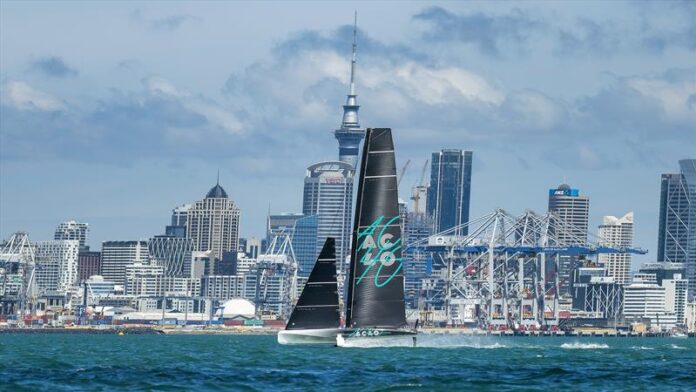Apologies for the radio silence. Wednesday and today are the first days for over two months when we haven’t been delving into RFS to produce the latest America’s Cup story.
RFS stands for Reconnaissance File System and is the output from the AC37 Joint Reconnaissance program, which is the “Spy Pool” of the 37th America’s Cup, to which some sailing media have access. If you know what you are looking at, RFS is the Aladdin’s Cave for sailing media.
In the last Cup in Auckland, the ubiquitous spy boats from various teams – maybe three RIBs with spotters and photographers aboard tracked the Kiwi’s every move, sending the output back to their masters.

Whether Team New Zealand tracked their opponents with the same zeal is not known, but one suspects that one way or another, they had their fingers on their various opponents’ pulses.
Many of the spies in Auckland were Kiwis – avoiding the expense of flying a spy team into Auckland, with accommodation costs on top of remuneration, and with multiple spy boats following a competitor. Now there is only one spy boat in the sailing location of each team – Auckland, Pensacola, Barcelona, Majorca and Cagliari. The photographs, video and reports go into a shared information pool which all teams can access at will.
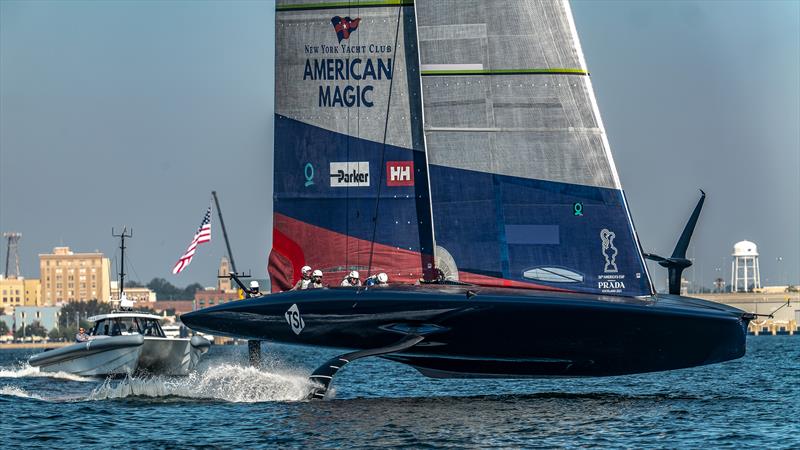
The old way created some angst between the spies and the teams, who historically have never been happy about being spied upon. At times teams became aggressive and competitive on the water – as the sailing team attempted to block the other spies, and the spies became just as aggressive to ensure they got their shots. We saw some incidents with RIBs cutting each other off at speed or getting too close to the foiling AC75. Maybe it was tolerable with the leadmines sailing at 10-14kts, but with the yachts sailing at 40kts plus, and the RIBS going at the same speed or more and trying to shoulder each other out of the way, the situation had become dangerous.
For the past two months, it has been a game of wait-and-see as the AC37 Recon system settled down. A lot of the niggle seems to have gone away. So far, the relationship between the Spies and their targets seems to be cordial, with the Teams appearing to accept the Recon teams have a job to do. The risk is that a variety of the Stockholm syndrome develops between the Watched and Watchers. But for the system to work properly there needs to some edginess in the relationship.
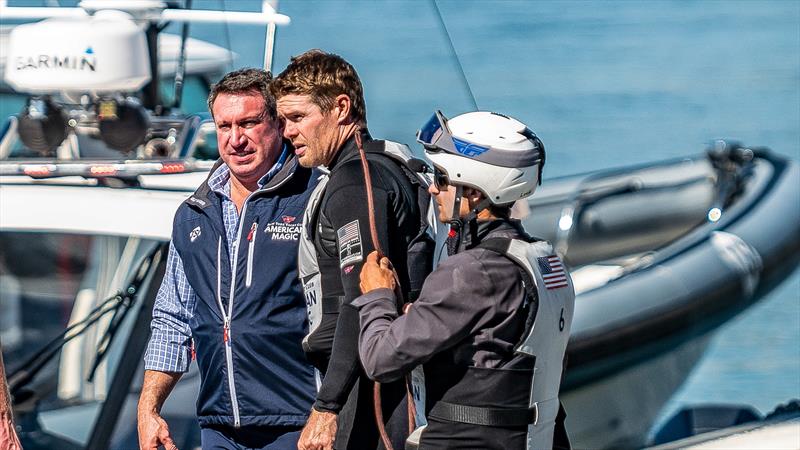
From a media perspective, we were very keen to get access to the RFS content. Trying to cover the build-up years to America’s Cup regattas at a venue outside Auckland was a very frustrating process – with leaked information being fed to the competitive detriment of other teams, and good images were always scarce.
The one exception was Bermuda, where Jason Smith, a local with no sailing interest, decided to use some very basic gear and invested a lot of time into shooting and putting the video up on his website of the teams sailing on the Great Sound for a year or more before the 2017 Cup.
His online pages became a regular go-to for the teams, media, and fans. Maybe Jason shone a light for what has become RFS. Now sailing fans see day-by-day content from a joint and team-independent information base, which Jason Smith first showed was possible.
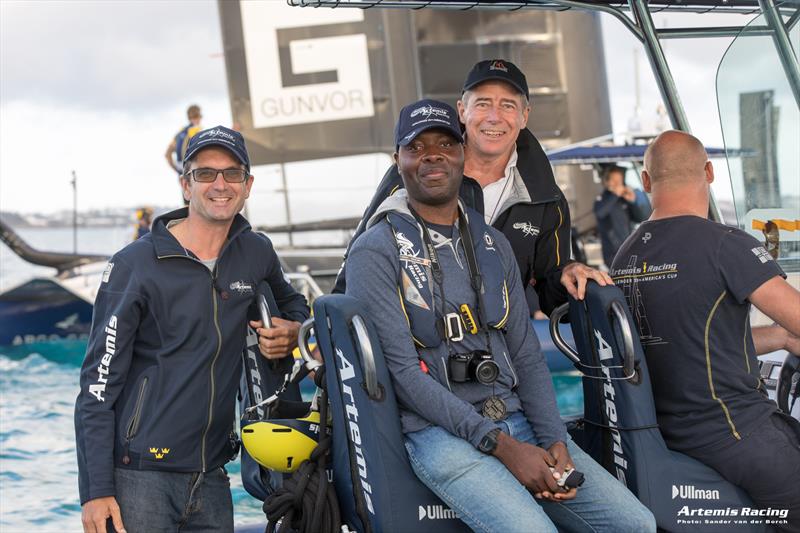
Trying to cover the 2004-2007 America’s Cup in Valencia was a nightmare, involving a lot of time sifting rumours for only a little reliable output.
Accessing RFS was also challenging – but now there’s a feast of content rather than a famine. The best part of the system is the access to images and video. Today was a new record with 70 video clips from one of the Recon team.
The highlights readers see are just a tiny percentage of the available content; unfortunately, there are no shortcuts to reviewing a day’s content in its entirety. Time has to be invested – or risk cheating your readership.
From what we are seeing in readership and story ratings, there is no doubt that sailing fans have been turned off by what has happened in the America’s Cup over the past two years or more – going back to about June 2020.
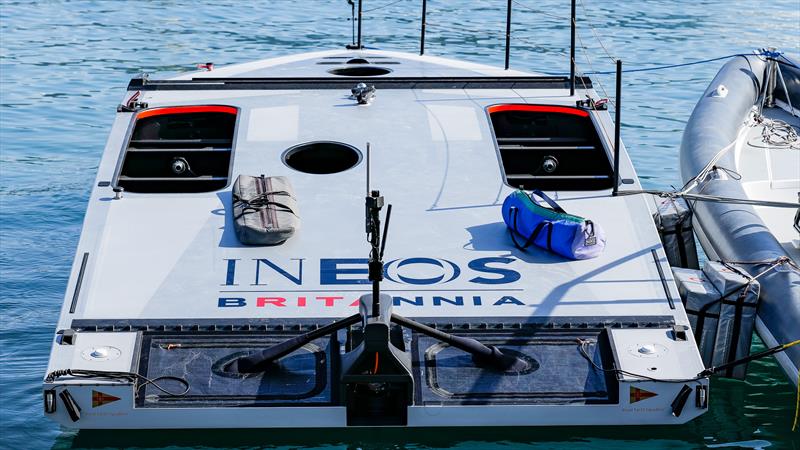
Some would say that is a predictable outcome of the decision to take the Cup to an offshore venue. The reality is that the Cup has been languishing since the 2007-2010 Court case over the validity of the first Challenge accepted by the Swiss Defender from a straw yacht club.
It remains to be seen whether Barcelona is the defibrillator the Cup needs to get back to Valencia’s entry of 12 teams (11 Challengers and the Defender) in 2007.
Depending on the current inflation and cost/price/FX situation, the budgets for a Cup team/entry remain comparable to the 2007 Cup.
The holders are giving the 2024 Cup its best shot by taking it into Europe and the proximity to sponsors.
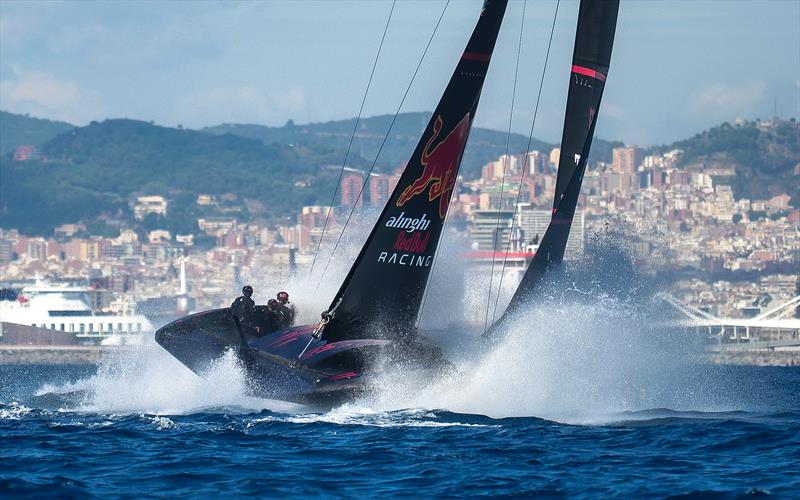
They are also giving European and British fans and mainstream media a chance to see and experience the incredible AC75s first-hand, rather than just the cut shots of a TV broadcast.
It will be interesting to see if confirmation that one, and probably two, series of the “Drive to Survive” series will hook more and new fans across to the America’s Cup, as it has in F1 Grand Prix. It will also be interesting to see the effect of the Youth and Women’s America’s Cup on the main event.
Youth America’s Cups were held in 2013 and 2017, with modest success – unfortunately, Government intransigence stopped the Youth Cup from being sailed in Auckland, and the continuity was lost. It also remains to be seen if the America’s Cup can pick up the same shine, enthusiasm and spontaneity for the Women’s event that we are seeing now for the Women’s Rugby World Cup, and earlier in England for the 2022 Women’s European Cup.
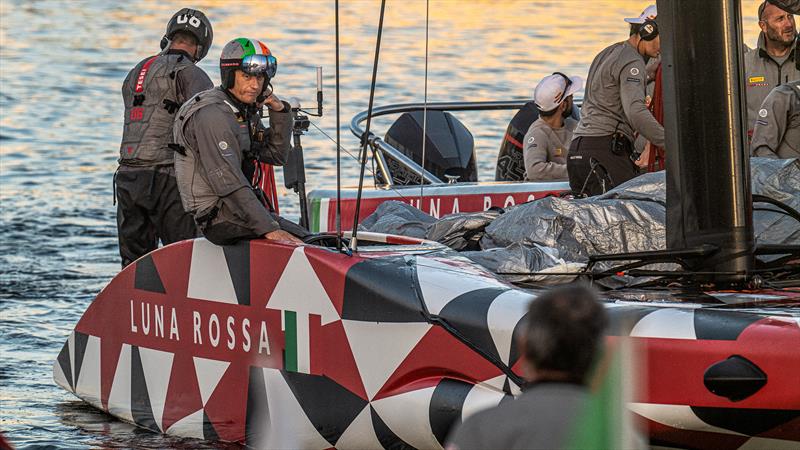
Now we have five strong, independent, and well-financed teams running three different strategies, in three different boat types, along with input and influence from two F1 teams, working out of five locations and all aimed at the same target – winning the 2024 America’s Cup – two years hence. It is a real amalgam of strategies, the likes of which we have not seen previously, and it will be fascinating to see how it all works out.
From past experience the current phase of the Cup is probably the most crucial – where teams have to get through their testing efficiently and effectively. Otherwise they go into the Cup with good ideas untested, and short of time.
For reasons best known to themselves, the New Zealand mainstream media seem to have the America’s Cup on “Ignore” – but that doesn’t mean that nothing is happening. Far from it. There’s plenty happening.
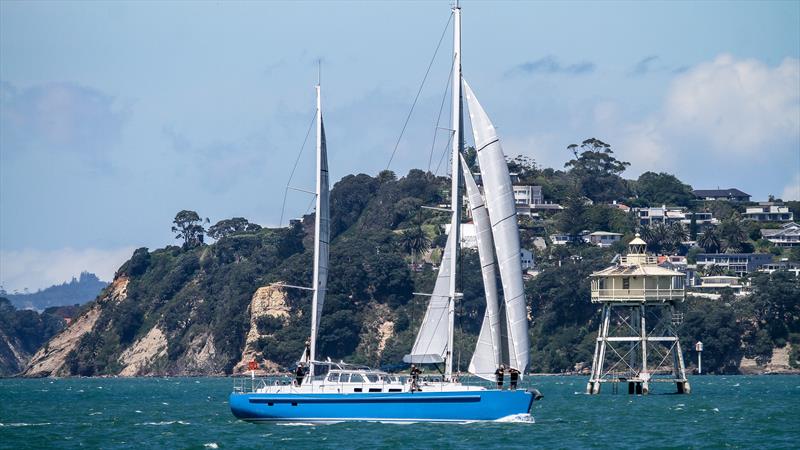
Last week we finally managed to get a sailing shot of the 78ft expedition ketch built by Lloyd Stevenson Boatbuilders. It’s the latest and largest boat the yard has built in its 35 years of operation. LSB are the archetypical Kiwi building company which had small beginnings, one thing led to another – and now they occupy a 2500sq metre specialist build facility – with 80% of the production being for export.
In these days of specialization in a particular technology, LSB are unusual in that they are deliberately diverse with wooden and carbon builds taking place in adjoining bays. Lloyd Stevenson started out as a boat building apprentice, and the company has always had apprentices on board, and works within the MAST Academy program – a funded process to transition Year 12-13 students from school to work. Lloyd and Tracey Stevenson’s comments on the impact of the America’s Cup on the NZ marine industry are also very interesting.
The New Zealand sailing scene is slowly getting into gear. The Coastal Classic has come and gone – not a record breaker, but at least it took place.
This weekend the Auckland P-Class championships will be sailed – attracting a fleet of almost 30 boats.
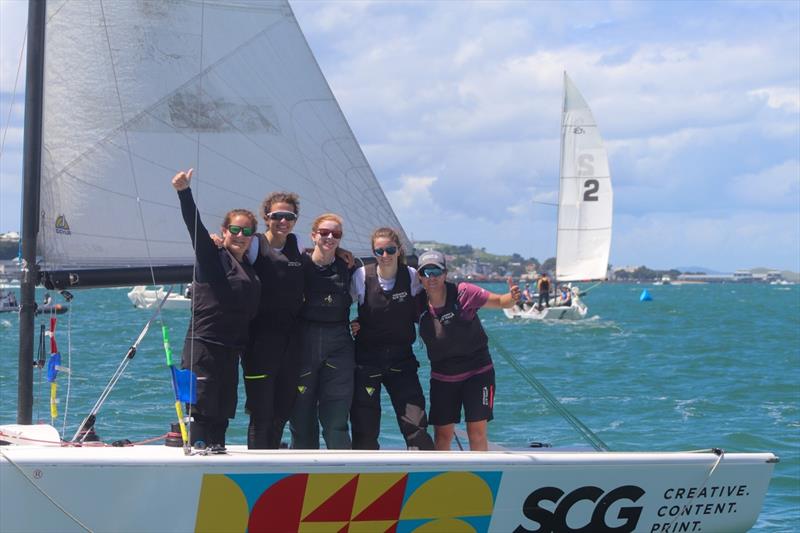
And also this week, the Women’s World Match Racing Championships will be sailed on the Waitemata Harbour.
The Barfoot & Thompson 2022 Women’s Match Racing World Championships (WWMRC) commenced at the Royal New Zealand Yacht Squadron on November 9th, bringing together the best female match racers from around the world.
This major international regatta will see 14 teams compete in a round robin – racing each other once, with the top eight qualifying to the quarterfinals, semi-finals and final on Sunday, November 13th, to decide both the 2022 Women’s Match Racing World Champion and the overall winner of the inaugural Women’s World Match Racing Tour (WWMRT).

The current World #1 and defending World Champion Pauline Courtois won the New Zealand title last weekend but only after a tight battle with Celia Willison (NZL), with the title being decided by a margin of just a boat length.
Hopefully we are in for a great series.



